What Is B2B? Exploring the Concept, Characteristics, and Benefits of the B2B Business Model
Discover the concept of B2B, its key characteristics, and the benefits of the B2B business model. Learn how B2B helps businesses enhance efficiency, expand their network, and improve service quality. Read on to better understand this business model and apply it to your own company!

1. What is the Concept of B2B?
B2B, short for "Business-to-Business," is a business model in which the buying and selling of goods or services occur between businesses, rather than between a business and the final consumer. This means that in the B2B model, one business provides a product or service to another business, serving the needs of companies in their own production, operation, or distribution.
B2B is a crucial part of the economy, especially in manufacturing, technology, and service industries, where businesses need to collaborate and support each other to grow and expand their operations.
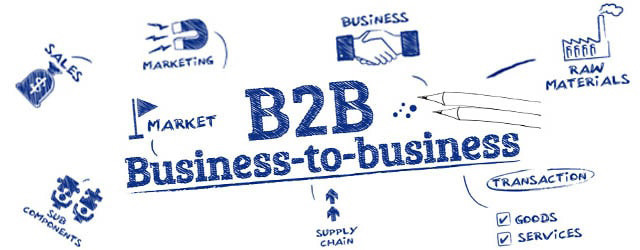
2. Characteristics of the B2B Business Model
The B2B business model has distinct characteristics compared to other models, primarily due to the nature of transactions between businesses. First, B2B transactions often have a high value and large volume, so the negotiation and contract signing process is typically complex and lengthy. This requires the involvement of multiple stakeholders from various departments such as procurement, finance, legal, and senior management.
Furthermore, the relationship between businesses in the B2B model is often based on long-term trust and cooperation. Businesses must build and maintain sustainable partnerships to ensure stability in supply and production. This includes entering into long-term contracts and committing to product and service quality.
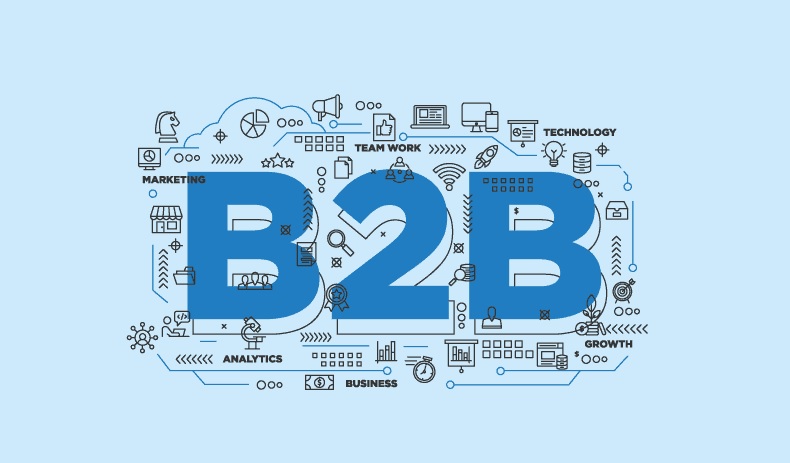
Additionally, the B2B model often requires a high degree of customization for products or services to meet the specific needs of each business partner. This means companies need to be flexible in designing and providing optimal solutions for their corporate clients.
Finally, the B2B model also faces challenges such as market volatility, high demands for security and information safety, and the need for continuous innovation and improvement of products/services to stay competitive.
3. The Role of the B2B Model in Business Operations
The B2B business model plays a significant role in modern business operations, particularly in optimizing production and distribution processes. First, B2B helps businesses create strong links and collaborative relationships with strategic partners, thereby improving business efficiency. This collaboration not only ensures stability in the supply chain but also helps businesses save costs through long-term contracts and preferential pricing.
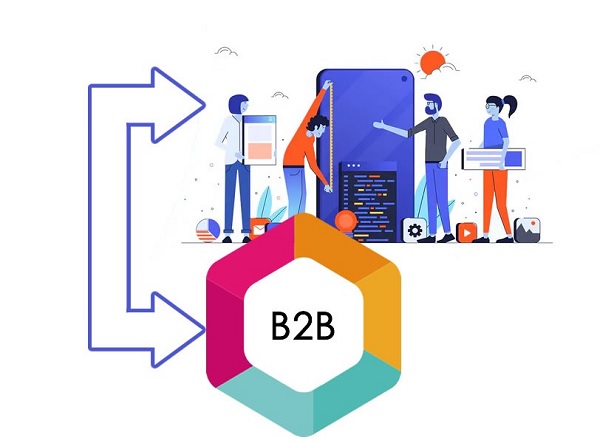
Moreover, the B2B model is instrumental in fostering innovation and product development. Through collaboration with other businesses, companies can share knowledge, experience, and technology, leading to the creation of new products and services that meet market demands. This interaction helps businesses quickly adapt to new changes and trends in the industry.
Furthermore, B2B helps expand business networks and enhance market access. Businesses can leverage relationships with partners to expand their reach, access new potential customers, and penetrate untapped markets. This is especially important for small and medium-sized enterprises (SMEs), as they can use the distribution and marketing channels of larger partners to grow their business.
Finally, B2B also contributes to improving a company's reputation and brand. By partnering with reliable and reputable partners, a business can increase its credibility among customers and stakeholders. This trust not only enhances the brand image but also creates favorable conditions for expanding future business collaborations.
4. Some Common B2B Models
Within the B2B business model, there are several common types that are widely adopted to meet the different needs of businesses. Below are four popular B2B models today:
4.1. Seller-oriented B2B
In the seller-oriented B2B model, a business owns an e-commerce site and provides products or services to other businesses. This is a common model in Vietnam, especially in the manufacturing and retail sectors.
- Example: Businesses that manufacture and supply construction materials and industrial equipment.
4.2. Buyer-oriented B2B
The buyer-oriented B2B model focuses on businesses purchasing products or services from multiple suppliers. The businesses act as the proactive buyers, searching for and selecting suitable suppliers.
- Example: Large corporations seeking suppliers of raw materials or equipment for production.
4.3. Intermediary-oriented B2B
The intermediary model is one where an intermediary acts as a bridge between the seller and the buyer. E-commerce platforms like Shopee, Tiki, and Lazada in Vietnam are prime examples of this model.
- Example: E-commerce marketplaces where businesses can list products for sale and customers can find and purchase products.
4.4. Cooperative-oriented B2B
The cooperative-oriented B2B model is similar to the intermediary model but emphasizes collaboration among multiple businesses in managing and operating a shared e-commerce marketplace or trading platform.
- Example: Trade communities, e-marketplaces, and internet exchanges where businesses cooperate to develop and manage the platform together.
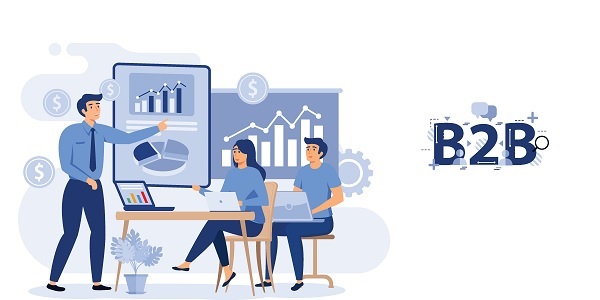
5. Who Are the Customers of B2B Businesses?
The customers of B2B businesses are primarily organizations and businesses, rather than individual consumers as in the B2C (Business-to-Consumer) model. B2B customers typically include:
5.1. Manufacturing Businesses
Manufacturing companies and businesses need to buy raw materials, components, and equipment from other suppliers to create their final products. These businesses often have a high demand for stable, high-quality raw materials.
- Example: Car manufacturers purchasing components from auto parts suppliers.
5.2. Wholesalers and Distributors
These distribution companies buy products from manufacturers and then resell them to retailers or directly to consumers. They need a stable and reliable source of supply to ensure goods are always available for their customers.
- Example: Electronics distributors buying products from manufacturers and reselling them to retail stores.
5.3. Retailers
Retail stores buy goods from manufacturers or distributors to sell directly to final consumers. They need to ensure that products are available to meet customer demand.
- Example: Supermarkets buying food, household goods, and other products from suppliers to resell to consumers.
5.4. Service Companies
Businesses that provide services such as consulting, IT, logistics, and marketing buy tools, software, and support services from B2B suppliers to improve and optimize their own services.
- Example: Consulting firms purchasing data analysis software from IT suppliers.
5.5. Non-profit Organizations and Government Agencies
Non-profit organizations and government agencies often need to purchase goods and services for their operations. They can buy from B2B suppliers to ensure quality and efficiency in their activities.
- Example: Non-governmental organizations purchasing medical equipment to support community health programs.

B2B customers often have high demands for the quality, reliability, and stability of the products or services they purchase. The relationship between businesses in the B2B model is typically based on long-term contracts and mutual trust, ensuring stability and efficiency in the business collaboration.
6. Opportunities and Challenges of the B2B Business Model
6.1. Opportunities
- Market Expansion: The B2B model allows businesses to access and expand their market globally. With the development of technology and the internet, businesses can easily find and collaborate with partners from all over the world, opening up many new and diverse business opportunities.
- Revenue Growth: Thanks to high-value contracts and long-term relationships with partners, the B2B model helps businesses achieve sustainable revenue stability and growth. B2B transactions often have high value and large volume, enabling businesses to improve financial performance.
- Optimizing Production and Supply Chain Processes: Close collaboration between businesses in the B2B model helps optimize production and supply chain processes. This not only helps reduce costs but also improves the quality of products and services, thereby enhancing a business's competitiveness in the market.
- Innovation and Product Development: Collaboration in the B2B model fosters innovation and product development through the sharing of knowledge and technology between partners. Businesses can work together to develop new solutions to meet the changing needs of the market and consumers.
6.2. Challenges
- Complex and Time-Consuming Process: B2B transactions often require complex negotiation and contract signing processes, extending the time from start to finish. This can make it difficult for businesses to respond quickly to market needs.
- High Demands for Quality and Security: B2B customers have high demands for product and service quality, as well as information security. Businesses must ensure they meet these high standards to maintain and develop sustainable collaborative relationships.
- Market Volatility: The B2B market can be affected by many external factors such as policy changes, economic fluctuations, and technology trends. Businesses need to be flexible and quickly adapt to these changes to remain competitive.
- Fierce Competition: Competition in the B2B model is very high, especially in fast-growing industries. Businesses must continuously innovate and optimize their operations to avoid falling behind competitors.
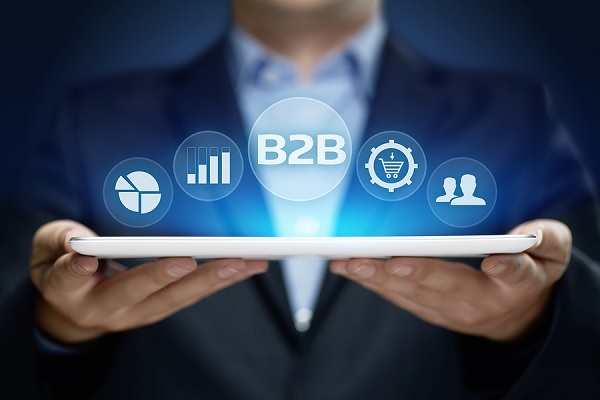
7. Advantages and Disadvantages of the B2B Business Model
7.1. Advantages
- High Security and Safety: Transactions in the B2B model are often of high value and require detailed contracts, ensuring transparency and safety for both parties. Businesses often invest in advanced security solutions to protect information and transactions, minimizing the risk of fraud and data loss.
- Large Orders and High Value: Unlike the B2C model, B2B transactions often involve large orders with high value. This helps businesses achieve higher revenue from each transaction, improving business efficiency and enhancing their competitiveness in the market.
- Long-Term Collaborative Relationships: The B2B model promotes the formation and maintenance of sustainable collaborative relationships between businesses. The trust and long-term commitment between business partners not only helps ensure stability in the supply chain but also creates favorable conditions for sharing knowledge and innovation.
- Optimized Production and Supply Chain Processes: Close collaboration between businesses in the B2B model helps optimize production and supply chain processes, thereby reducing costs and improving the quality of products and services. This helps businesses maintain and enhance their competitiveness in an increasingly fierce market.
7.2. Disadvantages
- Complex and Time-Consuming Process: B2B transactions often require complex and lengthy negotiation, agreement, and contract signing processes. This can delay the implementation of business plans and the ability to respond quickly to market needs.
- High Demands for Quality and Service: B2B customers often have high demands for product and service quality, as well as security and safety standards. Businesses need to invest in technology and quality control processes to meet these requirements, while ensuring customer trust and satisfaction.
- Payment and Financial Risks: Due to the often very high value of B2B transactions, businesses may face the risk of delayed or non-payment from customers. This can affect the company's cash flow and financial operations.
- Market Volatility and Competition: The B2B market can be affected by many external factors such as policy changes, economic fluctuations, and technology trends. Businesses need to be flexible and quickly adapt to these changes to remain competitive. Furthermore, competition in the B2B sector is also very fierce, requiring businesses to continuously innovate and optimize operations.
8. Differences Between B2B (Business-to-Business) and B2C (Business-to-Consumer)
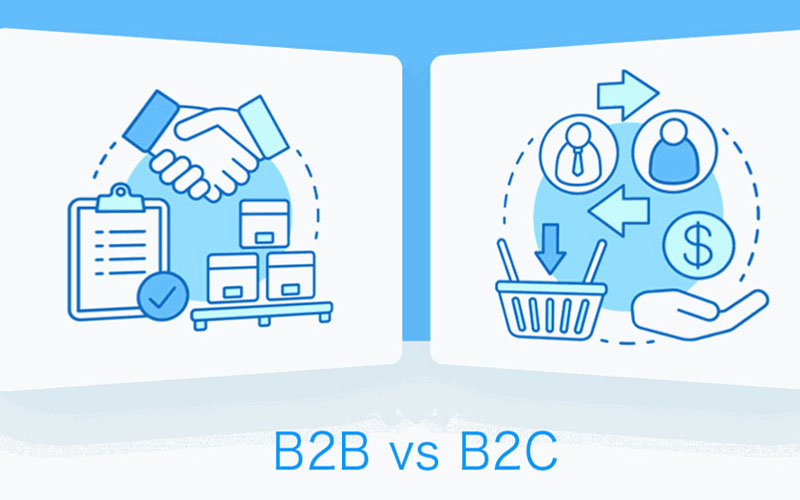
8.1. Target Customers
- B2B: The main customers of the B2B model are businesses and organizations. B2B transactions often have a high value and involve the procurement of raw materials, equipment, or services to support business operations and production.
- B2C: The target customers in the B2C model are individual consumers. B2C transactions are typically of lower value and focus on selling a final product directly to the consumer.
8.2. Sales Process
- B2B: The sales process in B2B is often more complex and prolonged. It requires multiple stages such as negotiation, contract signing, and product quality checks. The relationship between businesses is often based on trust and long-term collaboration.
- B2C: The sales process in B2C is simpler and faster, usually involving an online or in-store purchase and immediate payment. B2C transactions do not require complex contracts and are often less dependent on a long-term relationship between the buyer and seller.
8.3. Marketing Strategy
- B2B: The marketing strategy in B2B often focuses on building relationships and credibility. B2B businesses use marketing channels like seminars, trade shows, and in-depth content marketing to reach potential customers. These strategies emphasize providing detailed information and specific solutions to the client's business problems.
- B2C: The marketing strategy in B2C focuses on creating appeal and driving immediate purchases. B2C businesses often use advertising on mass media, social media, and promotions to attract consumers. The goal is to create strong brand recognition and encourage consumers to make a purchase.
8.4. Purchasing Behavior
- B2B: The purchasing decision in B2B is often made by multiple people and goes through many stages of approval. This process requires the involvement of various departments within the business, such as procurement, finance, and senior management.
- B2C: The purchasing decision in B2C is typically made by the individual consumer and is based on personal preferences, emotions, and immediate needs. This process is usually quick and less complex.
8.5. Customer Interaction and Support Services
- B2B: The B2B model often requires deep interaction and detailed support services. B2B customers need thorough consultation about products and services to meet their company's specific requirements. Customer support in B2B often includes complex technical solutions and professional after-sales support to ensure long-term performance and satisfaction.
- B2C: In the B2C model, customer interaction typically focuses on convenience and a quick shopping experience. B2C customer support often includes answering questions, handling complaints, and assisting with the purchasing process. B2C customers expect fast and accessible service, with various support channels like online chat, phone, and email.
8.6. Pricing Method
- B2B: Pricing in the B2B model is often customized and negotiated between parties. B2B businesses often apply flexible pricing policies based on purchase volume, payment terms, and long-term relationships. High-value contracts and recurring transactions often receive discounts and special terms.
- B2C: Pricing in the B2C model is typically fixed and transparent. B2C consumers expect clear and easy-to-understand prices, with promotions and discounts widely applied. B2C businesses often use a competitive pricing strategy to attract consumers and increase sales volume.
8.7. Market Size
- B2B: The B2B market is typically smaller in terms of customer numbers but larger in transaction value. B2B businesses focus on building sustainable relationships with a specific number of customers to maximize the value of each transaction.
- B2C: The B2C market is broader with a large customer base, but the value of each transaction is usually smaller. B2C businesses focus on reaching and attracting a large number of consumers to achieve high revenue through a large volume of transactions.
9. Marketing Strategies for B2B Businesses
To succeed in the B2B business model, companies need to build and implement effective marketing strategies that focus on establishing long-term customer relationships, optimizing the sales process, and enhancing brand value. Here are some marketing strategies that B2B businesses can apply:
9.1. Optimize Content and SEO for Your Business Website
- Create in-depth content: High-quality, in-depth content on topics related to the B2B industry helps attract and retain potential customers. Blog posts, whitepapers, case studies, and video tutorials are effective tools for sharing knowledge and demonstrating a B2B business's expertise to users.
- Optimize SEO: Use SEO techniques to ensure that your business's content and information are easily found on search engines. Keyword research, building internal and external links, and optimizing meta descriptions are important factors that help improve your website's ranking.
9.2. Build Customer Relationships
- Develop a personalized approach strategy: Every B2B customer has unique needs and desires. Therefore, a personalized approach strategy will help you build a deeper relationship with them. Use CRM to track and manage customer information, allowing you to provide the most suitable solutions and services.
- Participate in industry events and seminars: Attending and organizing events, seminars, and trade shows is a great opportunity to meet face-to-face and build relationships with potential partners and customers. This not only helps raise brand awareness but also creates new business collaboration opportunities.
9.3. Use Digital Marketing
- Email marketing: An effective email marketing strategy includes sending regular newsletters, new product announcements, and special offers. Email marketing helps maintain connections with existing customers and attract new ones through valuable content and clear calls to action.
- Use professional social media: Social media platforms like LinkedIn and Facebook are important channels for connecting with industry experts and promoting your brand. Share useful content, participate in professional groups, and interact with others' posts to build credibility and a network of relationships.
9.4. Apply Technology and Data Analytics
- Use marketing automation technology: Automation technology helps optimize marketing campaigns, track customer behavior, and provide detailed reports on marketing effectiveness. Tools like HubSpot, Marketo, and Pardot can assist B2B businesses in managing and executing complex marketing campaigns.
- Analyze data and optimize strategies: Analyze data from marketing campaigns to better understand customer behavior and needs. Use analytics tools to track the effectiveness of each strategy and make timely adjustments to maximize results.
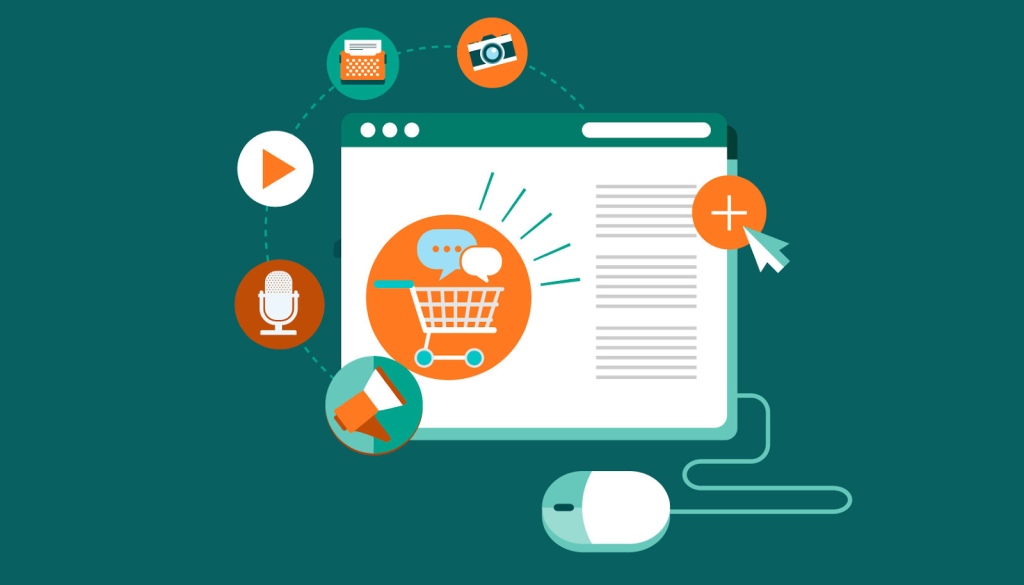
10. Major Global B2B Companies
- Alibaba Group: Alibaba is a Chinese multinational e-commerce and technology conglomerate, famous for its B2B platforms like Alibaba.com, which connects suppliers and buyers worldwide.
- Fields: E-commerce, technology, logistics.
- Amazon Business: Amazon Business is a division of Amazon that provides B2B purchasing solutions for businesses, from office supplies to industrial equipment, with features like fast delivery and expense reporting.
- Fields: E-commerce, logistics, cloud services.
- SAP: SAP is one of the world's leading providers of enterprise management software, offering ERP, CRM, and SCM solutions to optimize business processes and improve corporate performance.
- Fields: Enterprise management software, information technology.
- Microsoft: Microsoft provides B2B solutions through software products like Office 365, Azure, and Dynamics 365, helping businesses enhance work efficiency, data management, and information security.
- Fields: Information technology, software, cloud services.
- IBM: IBM is one of the world's largest technology companies, providing B2B solutions in AI, blockchain, cloud computing, and digital consulting services.
- Fields: Information technology, consulting, cloud services.
11. Major B2B Businesses in Vietnam
- FPT Corporation: FPT is a leading technology group in Vietnam, providing IT, telecommunications, and software solutions for domestic and international businesses.
- fields: Information technology, telecommunications, software.
- Viettel Business Solutions: Viettel Business Solutions, a part of the Viettel Military Industry and Telecoms Group, provides telecommunications, IT, and digital services solutions for businesses and organizations in Vietnam.
- fields: Telecommunications, information technology, digital services.
- Vinamilk: Vinamilk is Vietnam's largest dairy company, supplying milk and nutritional products to distributors, supermarkets, and retail stores nationwide.
- fields: Food and beverage, nutritional products.
- Saigon Beer-Alcohol-Beverage Corporation (SABECO): SABECO is Vietnam's largest beer producer, supplying products to distributors, retailers, and businesses in the food and beverage industry.
- fields: Food and beverage, beer production.
- Masan Group: Masan Group is a multi-industry conglomerate in Vietnam, with core business areas including food and beverages, mineral resources, and consumer services. Masan provides high-quality products and services to businesses and consumers.
- fields: Food and beverage, mineral resources, consumer services.
12. GMAJOR: A Global B2B Business Connection Platform
GMAJOR is a leading online B2B business connection platform designed to help businesses easily and effectively find and collaborate with suitable partners. With GMAJOR, your business can expand its network, enhance business efficiency, and foster sustainable growth.
Key Features of GMAJOR:
- Smart Connection: Using advanced artificial intelligence (AI), GMAJOR continuously analyzes and suggests potential business partners based on your business's profile and needs. This optimizes the process of finding and approaching partners, saving time and resources.
- Seamless Communication: GMAJOR supports automatic translation, allowing you to easily communicate with partners from different countries without language barriers. Just type your message in your native language, and GMAJOR will automatically translate it into your partner's language.
- Diverse Integration: The platform offers tools that integrate with CRM, ERP, and other management software, helping you manage customer relationships and business processes efficiently and continuously.
- Security and Safety: GMAJOR is committed to protecting your information and data with the highest security standards, ensuring that all transactions and data are kept safe.
Benefits of Using GMAJOR:
- Enhanced Business Efficiency: By connecting with suitable partners, your business can improve its operational efficiency, reduce costs, and increase profitability.
- Market Expansion: Access businesses from all over the world, expand your reach, and explore new business opportunities.
- Improved Service Quality: Enhance customer service and manage partner relationships through GMAJOR's advanced tools and features.
Why Choose GMAJOR? GMAJOR is not just a business connection platform, but also a powerful assistant that helps you manage and grow your business comprehensively. Let GMAJOR help you achieve your business goals and take your company to the next level.
Join GMAJOR at: https://gmajor.biz today to experience the difference and discover new business opportunities!
Conclusion
In conclusion, the B2B (Business-to-Business) model is a vital component of the global economy, connecting companies and driving growth. Unlike B2C, it's defined by large-value transactions, long-term relationships, and complex, multi-party sales processes. While B2B presents challenges like intense competition and market volatility, its strengths—such as stable revenue, high-value contracts, and opportunities for innovation—make it a powerful framework for businesses aiming for sustainable growth. By understanding its unique characteristics and adopting the right strategies, companies can leverage B2B to expand their network, enhance efficiency, and build a strong, lasting presence in the market.